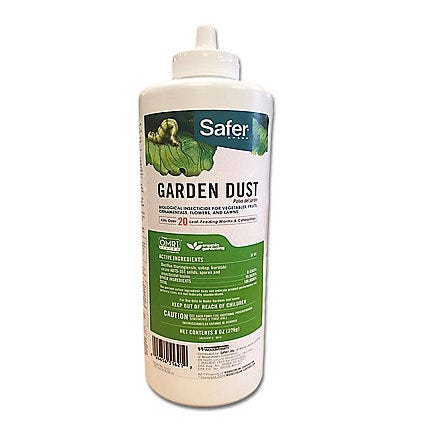
So... What's a Bagworm?
Adult bagworms differ in appearance depending on their gender. Males are black with clear wings while females are whitish in color and do not have wings, antennae, legs, or mouthparts.
The females basically stay in their pupation sack even after pupating. In a larva-like state, the female will remain in this bag, laying her eggs inside the bag with her.
Reproduction Patterns of Bagworms
In the spring, the bagworm eggs hatch and each larva leaves the bag by releasing a thin silk thread and floating down out of the bag. The wind will then carry it to another host plant, where it will attach and start creating its own bag. Using pieces of leaves, twigs, and plant debris, it will construct the bag and attach it to a branch of the host plant.
This larva will continue to feed on the host plant, and in turn, continue to add to the material surrounding the silk sack. The larva may move its sack to another spot on the plant or to another host plant if it prefers.
Larvae will pupate in September. Several days later, males will emerge in search of females who are still in their bags. The female moth will lay her eggs and then plug the bottom hole to protect the eggs.
Then she will either die in the sac or drop down from the sac and die after reaching the ground. The eggs will spend the winter in the bag before hatching in the spring.
Bagworm's Habitat
Bagworms inhabit regions of the United States that are east of the Mississippi River.
They live in trees and shrubs, and prefer coniferous trees and arborvitae, juniper and cedar.
The larvae construct bags and attach themselves to the host plant where they will feed. You can protect your plants by using Safer® Brand Garden Dust with B.T., a product designed to eliminate your bagworm problem!
Symptoms of Bagworm Damage
Most notable of the symptoms is the cone-shaped bag in which the larvae and the female reside. These bags will have pieces of plant debris on them and hang from a branch at the tip of the bag.
Trees and shrubs will appear to have areas of defoliation.
Results of a Bagworm Infestation
Shrubs and trees can become stripped of their foliage and needles in a very short period of time, especially if there is a large infestation.
Unfortunately, infestations may not be noticed until after this has begun occurring and much damage has already been done. Plants may be so severely damaged they end up dying.
These infestations can be prevented by using Safer® Brand Garden Dust with B.T. Once ingested, this Garden Dust will kill the bagworms quickly, leaving your plant healthy again!
Controls
What?
B.t., Bacillus thuringiensis, can be successfully utilized in the control of bagworms. A OMRI Listed® product such as Safer® Brand Garden Dust with B.T. is the ideal solution to rid your plants of bagworms.

How?
Apply while the bagworm is in its early larval stages, since that is when the bagworm is most susceptible to the B.t. Carefully read and follow all instructions completely for safe and effective application.
When?
B.t. can be successfully utilized in the control of bagworms when it is applied while the bagworm is in its early larval stages towards the end of spring, right after the larvae have emerged and drifted to their new host plants.
Safer® Brand offers a variety of bagworm control products to help control and eliminate this garden pest. Please check out our bagworm control products for more details about how they work and how, when, where they should be applied.
Why Choose a Solution?
Solutions break down quickly to their natural elements. They are preferable to chemical pesticides that leave residuals where they are sprayed causing long-term detrimental effects on the environment.
Natural Predators
There are a very few known natural predators of the bagworm. These predators are not usually sufficiently able to control bagworms, especially in urban areas.
Environmental Controls
What?
Handpicking bagworms can help control them, especially in smaller areas such as landscape gardens and yards. Unfortunately, there are no other environmental options except removing the host plant to prevent the spread of bagworms to other plants in your yard or garden. Using a product such as Safer® Brand Garden Dust with B.T. will address your bagworm problem without using chemicals.
When?
The best time to use Safer® Brand Garden Dust with B.T. for control of bagworms is in the afternoon or on a cloudy day since B.T. breaks down in direct sunlight.

